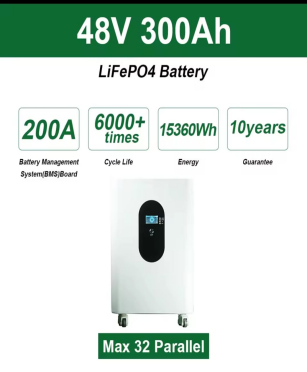18650 lithium battery
18650 is the originator of lithium-ion batteries. It is a standard lithium-ion battery model set by Sony Corporation of Japan to save costs. 18 represents a diameter of 18mm, 65 represents a length of 65mm, and 0 represents a cylindrical battery.
Common 18650 batteries are divided into lithium-ion batteries and lithium iron phosphate batteries. The nominal voltage of lithium-ion batteries is 3.7V, and the charging cut-off voltage is 4.2V. The nominal voltage of lithium iron phosphate batteries is 3.2V, and the charging cut-off voltage is 3.6V. The capacity is usually 1200mAh-3350mAh, and the common capacity is 2200mAh-2600mAh[1].
Basic information
Chinese name
18650 lithium battery
Common capacity
2000mAh/2600mAh/3000mAh
Voltage
3.7v, 3.2v
Common types
Lithium-ion battery, lithium iron phosphate battery
Battery height
65mm
Battery diameter
18mm
Foreign name
18650 lithium batteries
Development history
18650 lithium battery
Lithium battery (Li-ion, Lithium Ion Battery): Lithium-ion batteries have the advantages of light weight, large capacity, and no memory effect, so they are widely used - many digital devices use lithium-ion batteries as power sources, although their prices are relatively expensive. Lithium-ion batteries have a high energy density, and their capacity is 1.5 to 2 times that of nickel-hydrogen batteries of the same weight, and they have a very low self-discharge rate. In addition, the advantages of lithium-ion batteries, such as almost no "memory effect" and no toxic substances, are also important reasons for their widespread use. In addition, please note that lithium batteries are generally marked with 4.2V lithiumion battery (lithium battery) or 4.2V lithium secondary battery (lithium secondary battery), 4.2V lithiumion rechargeable battery (rechargeable lithium battery) in English, so users must read the markings on the battery block when purchasing batteries to prevent mistaking cadmium nickel or hydrogen nickel batteries for lithium batteries due to not seeing the battery type clearly.
Type Difference
18650 Lithium Battery
Lithium batteries marked with 3.7V or 4.2V are the same. It's just that the manufacturer's markings are different. 3.7V refers to the platform voltage (i.e. typical voltage) of the battery during discharge, while 4.2 volts refers to the voltage when fully charged. Common rechargeable 18650 lithium batteries are marked with a voltage of 3.6 or 3.7V, and 4.2V when fully charged. This has little to do with the power (capacity). The mainstream capacity of 18650 batteries ranges from 1800mAh to 2600mAh (the capacity of 18650 power batteries is mostly 2200~2600mAh), and the mainstream capacity is even marked with 3500 or 4000mAh or above.
It is generally believed that the power of a lithium battery is exhausted when the no-load voltage is lowered to below 3.0V (the specific value depends on the threshold value of the battery protection board, such as as low as 2.8V and 3.2V). Most lithium batteries cannot be discharged with a no-load voltage lower than 3.2V, otherwise excessive discharge will damage the battery (generally, lithium batteries on the market are basically used with protection boards, so excessive discharge will also cause the protection board to fail to detect the battery, and thus fail to charge the battery). 4.2V is the maximum limit voltage for battery charging. It is generally believed that the lithium battery is fully charged when the no-load voltage is charged to 4.2V. During the battery charging process, the battery voltage gradually rises from 3.7V to 4.2V. The lithium battery cannot be charged to a no-load voltage above 4.2V, otherwise it will damage the battery. This is the special feature of lithium batteries.
Functional Uses
Main Uses
18650 Lithium Battery
The theoretical life of 18650 battery is 1000 cycles of charging. Due to the large capacity per unit density, most of them are used in laptop batteries. In addition, because 18650 has very good stability at work, it is widely used in major electronic fields: often used in high-end strong light flashlights, portable power supplies, wireless data transmitters, electric heating clothes and shoes, portable instruments and meters, portable lighting equipment, portable printers, industrial instruments, medical instruments, etc.
Charging and Discharging Principles
The working principle of lithium-ion batteries refers to their charging and discharging principles. When charging the battery, lithium ions are generated on the positive electrode of the battery, and the generated lithium ions move to the negative electrode through the electrolyte. The carbon used as the negative electrode is in a layered structure with many micropores. The lithium ions that reach the negative electrode are embedded in the micropores of the carbon layer. The more lithium ions are embedded, the higher the charging capacity.
In the same way, when the battery is discharged (that is, the process of using the battery), the lithium ions embedded in the carbon layer of the negative electrode are released and move back to the positive electrode. The more lithium ions that return to the positive electrode, the higher the discharge capacity. What we usually call battery capacity refers to the discharge capacity.
18650 lithium battery
It is not difficult to see that during the charging and discharging process of lithium-ion batteries, lithium ions are in a state of motion from positive electrode → negative electrode → positive electrode. If we compare the lithium-ion battery to a rocking chair, the two ends of the rocking chair are the two poles of the battery, and the lithium ions are like excellent athletes, running back and forth at the two ends of the rocking chair. Therefore, experts have given lithium-ion batteries another lovely name, rocking chair battery.
Charging and discharging process
The charging control of lithium batteries is divided into two stages. The first stage is constant current charging. When the battery voltage is lower than 4.2V, the charger will charge at a constant current. The second stage is the constant voltage charging stage. When the battery voltage reaches 4.2V, due to the characteristics of lithium batteries, if the voltage is higher, it will be damaged. The charger will fix the voltage at 4.2V, and the charging current will gradually decrease. When the current decreases to a certain value (usually 1/10 of the set current), the charging circuit is cut off, the charging completion indicator light is on, and the charging is completed.
Overcharging and discharging of lithium-ion batteries will cause permanent damage to the positive and negative electrodes. Excessive discharge causes the negative electrode carbon sheet structure to collapse, and the collapse will cause the lithium ions to be unable to insert during the charging process; overcharging causes too many lithium ions to be embedded in the negative electrode carbon structure, causing some of the lithium ions to never be released again.
18650 lithium battery charger
Some chargers are implemented using cheap solutions, which are not good enough in control accuracy, and are prone to abnormal battery charging and even damage to the battery. When purchasing a charger, try to choose a 18650 lithium-ion battery charger from a big brand, with guaranteed quality and after-sales service to extend the battery life. The brand-guaranteed 18650 lithium-ion battery charger has four protections: short circuit protection, overcurrent protection, overvoltage protection, battery reverse connection protection, etc. Overcharge protection: When the charger overcharges the lithium-ion battery, the charging state needs to be terminated to prevent the internal pressure from rising due to temperature rise. To this end, the protection device needs to monitor the battery voltage. When it reaches the battery overcharge voltage, the overcharge protection function is activated and charging is terminated. Overdischarge protection: In order to prevent the overdischarge state of the lithium-ion battery, when the lithium-ion battery voltage is lower than its overdischarge voltage detection point, the overdischarge protection is activated, the discharge is terminated, and the battery is kept in a low quiescent current standby mode. Overcurrent and short-circuit protection: When the discharge current of the lithium-ion battery is too large or a short circuit occurs, the protection device will activate the overcurrent protection function.
Difference
18650 lithium battery
18650 lithium battery18650 lithium battery
3
Zhang
18650 lithium battery
18650 means 18 mm in diameter and 65 mm in length. The model of the No. 5 battery is 14500, with a diameter of 14 mm and a length of 50 mm. Generally, 18650 batteries are used more in industry, and rarely in civilian use. They are commonly used in laptop batteries and high-end flashlights.
18650 is just the size model of the battery. According to the type of battery, it can be divided into lithium-ion 18650, lithium iron phosphate 18650, and nickel-metal hydride 18650 (rare). The most common 18650 is lithium-ion.
General configuration
18650 is a lithium-ion battery
The nominal voltage of a single cell is generally: 3.6V or 3.7V
The charging voltage is generally: 4.20V (4.2V-4.3V for lithium cobalt oxide)
The minimum discharge termination voltage is generally: 2.75V. A voltage lower than this voltage can easily lead to a serious decrease in battery capacity or even scrapping
Maximum charge termination voltage: 4.20V
Diameter: 18±0.2mm
Height: 65±2.0mm
Capacity: more than 1000mAh, the conventional capacity is 2200mAh-3200mAh. The highest capacity of 18650 batteries is LG, which can reach 3600mAh, but the price is not low.
Advantages and Disadvantages
Advantages
1. Large capacity. The capacity of 18650 lithium battery is generally between 1200mah and 3600mah, while the capacity of general battery is only about 800mah. If combined into 18650 lithium battery pack, the 18650 lithium battery pack can easily exceed 5000mah.
2. Long life. The service life of 18650 lithium battery is very long. The cycle life can reach more than 500 times under normal use, which is more than twice that of ordinary batteries.
3. High safety performance. 18650 lithium battery has high safety performance, no explosion, no combustion; non-toxic, no pollution, RoHS trademark certification; various safety performances are completed in one go, the number of cycles is more than 500 times; good high temperature resistance, discharge efficiency under 65 degrees is 100%. To prevent battery short circuit, the positive and negative poles of 18650 lithium battery are separated. So the possibility of short circuit has been reduced to the extreme. A protection board can be installed to prevent the battery from being overcharged or over-discharged, which can also extend the battery life.
4. High voltage. The voltage of 18650 lithium batteries is generally 3.6V, 3.8V and 4.2V, which is much higher than the 1.2V voltage of nickel-cadmium and nickel-metal hydride batteries.
5. No memory effect. It is not necessary to discharge the remaining power before charging, which is convenient to use.
6. Low internal resistance: The internal resistance of polymer batteries is smaller than that of general liquid batteries. The internal resistance of domestic polymer batteries can even be below 35mΩ, which greatly reduces the self-consumption of the battery and extends the standby time of the mobile phone. It can fully reach the level of international standards. This polymer lithium battery that supports large discharge current is an ideal choice for remote control models and has become the most promising product to replace nickel-metal hydride batteries.
7. It can be connected in series or in parallel to form a 18650 lithium battery pack
18650 lithium battery
8. Wide range of use. Laptops, walkie-talkies, portable DVDs, instruments, audio equipment, model airplanes, toys, video cameras, digital cameras and other electronic devices.
Disadvantages
The biggest disadvantage of 18650 lithium battery is that its volume is fixed, and it is not easy to locate when installed in some notebooks or some products. Of course, this disadvantage can also be said to be an advantage. This is a disadvantage compared to the customizable and changeable size of other lithium batteries such as polymer lithium batteries. And it becomes an advantage compared to some products with specified battery specifications.
18650 lithium battery is prone to short circuit or explosion, which is also relative to polymer lithium battery. If it is relative to ordinary batteries, this disadvantage is not so obvious.
18650 lithium battery production requires a protection circuit to prevent the battery from being overcharged and causing discharge. Of course, this is necessary for lithium batteries, and this is also a common disadvantage of lithium batteries, because the materials used in lithium batteries are basically cobalt oxide materials, and lithium batteries made of cobalt oxide materials cannot discharge with large currents and have poor safety.
The production conditions of 18650 lithium batteries are high. Compared with general battery production, 18650 lithium batteries have very high production conditions, which undoubtedly increases production costs.





